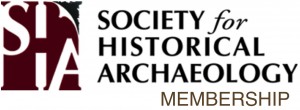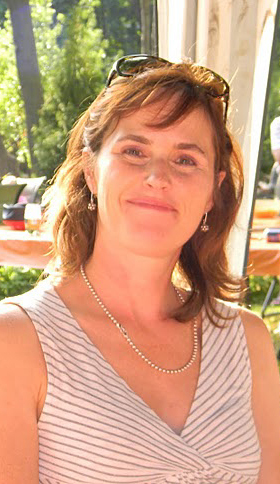Meet a Member: David Landon
Here's the latest in our series of entertaining interviews with a diverse array of your…
 Here’s the latest in our series of entertaining interviews with a diverse array of your fellow SHA members. Meet a member for the first time or learn something about a colleague that you never knew before. This blog series also offers current members an opportunity to share their thoughts on why SHA membership is important (Camaraderie? Professional service? Exchange of ideas in conference rooms and beyond? You tell us!). If you would like to be an interviewee, please email the Membership Committee Social Media Liaisons Eleanor Breen (ebreen@mountvernon.org) or Kim Pyszka (kpyszka@aum.edu).
Here’s the latest in our series of entertaining interviews with a diverse array of your fellow SHA members. Meet a member for the first time or learn something about a colleague that you never knew before. This blog series also offers current members an opportunity to share their thoughts on why SHA membership is important (Camaraderie? Professional service? Exchange of ideas in conference rooms and beyond? You tell us!). If you would like to be an interviewee, please email the Membership Committee Social Media Liaisons Eleanor Breen (ebreen@mountvernon.org) or Kim Pyszka (kpyszka@aum.edu).
Allison Bain is a professor of archaeology at Université Laval in Quebec City, Québec, Canada. She specializes in environmental archaeology and is currently working on projects in Québec, Labrador, Iceland and Barbuda. She also co-directs Université Laval’s field school in historical archaeology.
 What’s the most interesting artifact you’ve ever found?
What’s the most interesting artifact you’ve ever found?
In the summer of 1993 I worked on Martin Frobisher’s late 16th century ore mining site on tiny Kodlunarn Island in the Canadian Arctic. With my team, we found a complete wicker basket buried in the permafrost which had been left by the English as they hoped to return and start a colony. The basket was in a part of the site we called the Ship’s Trench and it was found with other provisions including a barrel of peas and ship’s biscuit. Working on traces of 16th century English mineral exploration in a region populated by only few Inuit families every summer was a great experience and this project really changed my vision of historical archaeology. Today the restored wicker basket is in the Canadian Museum of History. http://www.historymuseum.ca/cmc/exhibitions/hist/frobisher/frpro01e.shtml
Who influenced your decision to become an archaeologist?
Great question, it was my high school Latin teacher. I went to a pretty average public high school but it still offered Latin which I took for 4 years. I found it far more interesting than history as we studied the past via language, poetry, art and archaeology. She encouraged me to take a summer course in archaeology (see next answer) and I was hooked.
What is the first site you worked on? What is the last one (or current one)?
The first site was the Seed site, a Huron village just north of Toronto in 1983. It was part of the Boyd Archaeological field school which trained 100s of students in high school. My current project is the Intendant’s Palace site in Quebec City. This is the Université Laval field school in historical archaeology and it has wonderfully complex stratigraphy and continues to both surprise and challenge us every year.
Fieldwork or labwork?
Both! A great part of my job is teaching our field school in historical archaeology and I am also in the field occasionally with other projects. As soon as the snow starts to melt after a long Québec winter, I look forward to getting outside with our students. I also have a research lab devoted to environmental archaeology and time at the microscope is also wonderful.
Why are you a member of SHA?
I am a member of the SHA to stay connected with historical archaeology, it is a great venue. I look forward to every bulletin and journal as well as the conferences, though I cannot make it every year. The members of the SHA are a very diverse group…geographically, politically and methodologically, but membership gives us a community.
At what point in your career did you first join SHA?
Graduate school, specifically during my doctoral studies.
How many years have you been a member (approximately)?
Joined in 1998 and still going strong!
Which article from Historical Archaeology has been the most influential to you?
During my doctoral studies I undertook archaeoentomological and archaeoparasitological analyses on a huge 19th century latrine in Quebec City (currently the Auberge St. Antoine). Joan Geismar’s 1993 article « Where is nightsoil? Thoughts on an urban privy » (volume 27(2) – download it for free here!), was immensely helpful in helping me think about about my site. At the time I had never excavated a 19th century urban site, had just learned French and had just moved to Quebec City. Coming across this article was like a little light going on! I had the pleasure of telling Joan this story at a conference a few years ago.
Which benefit of belonging to SHA do you find the most beneficial?
I would say that the journal is the most beneficial aspect of membership for me, but the conferences are also important.